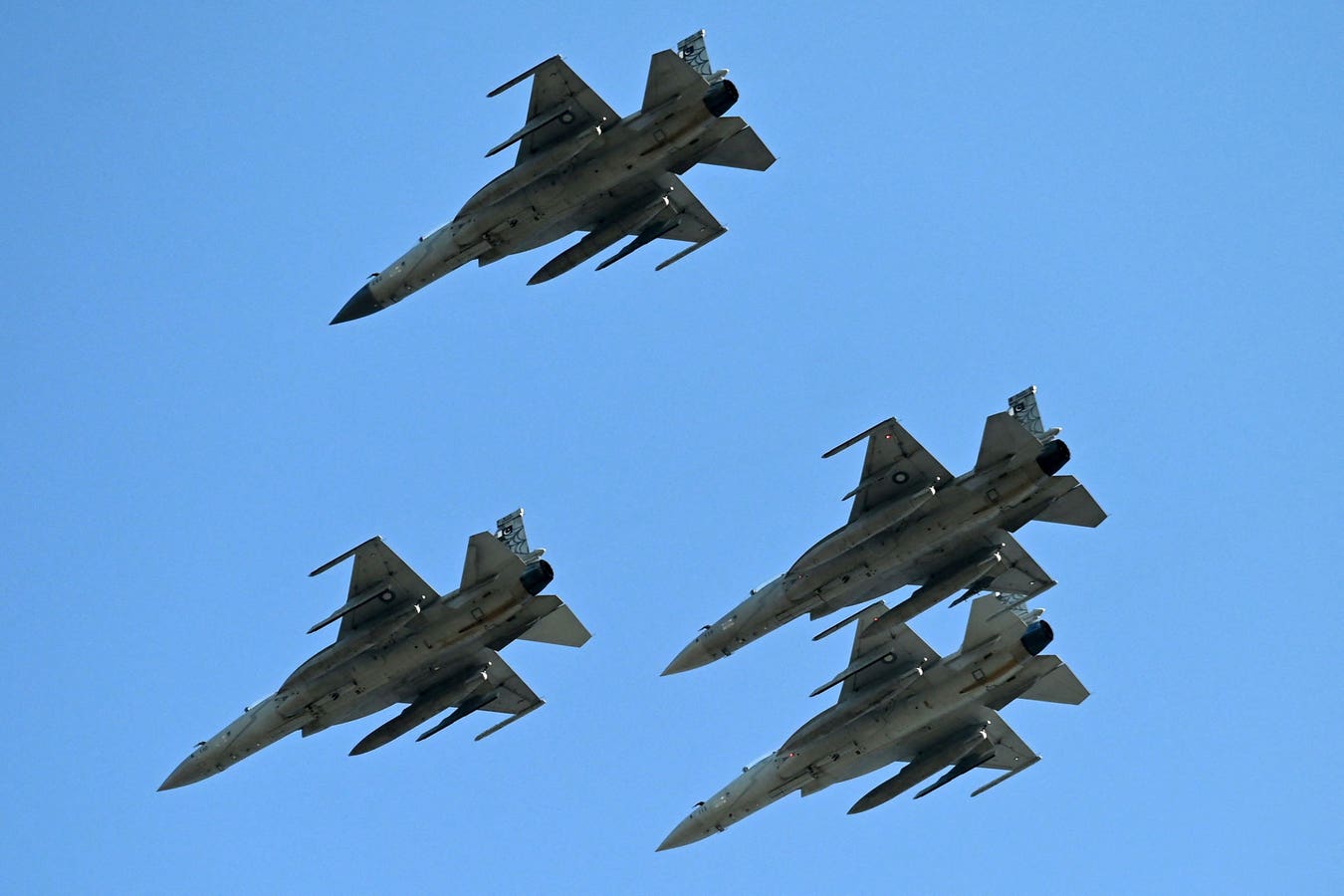Pakistan used fighter jets in its airstrikes against suspected Pakistani Taliban hideouts in Afghanistan early on Monday in the second time in 2024, so far, that Islamabad has targeted groups in the territories of neighboring countries. Pakistan’s use of fighter jets for such raids sharply contrasts with neighboring Iran, which invariably relies on ballistic missiles and drones to attack non-state actors beyond its frontiers.
It’s unclear how far the Pakistani jets flew into Afghanistan but they were used in the attack against several positions Islamabad alleges belonged to the Pakistani Taliban. The airstrikes were retaliation for the killing of seven Pakistani soldiers in a suicide bomb attack two days earlier. The Afghan Taliban claimed Pakistan’s strikes killed eight innocent people and responded by firing at the border.
Pakistan previously carried out rare airstrikes against Iran in January shortly after Tehran launched missiles and drones, purportedly against militant camps on Pakistani soil. Islamabad responded forcefully in kind and, arguably, disproportionately using an assortment of drones, rockets, and standoff weaponry against seven alleged militant targets in Iranian territory.
It was speculated the standoff weapons were subsonic Ra’ad air-launched cruise missiles, which could have been safely launched from fighters operating inside Pakistani airspace. On the other hand, Pakistani military sources claimed aircraft and drones flew up to 12 miles inside Iranian airspace while conducting their strikes.
Unlike the Taliban, Iran has an air force and significant ground-based air defenses, making an air raid using fighter jets inside Iranian airspace significantly more risky than Afghanistan. The Taliban has already announced it intends to address this vulnerability by building air defenses, but it is unclear where they can acquire the necessary equipment.
The Iranian attack that prompted Pakistan’s brief but ferocious response followed two simultaneous Iranian missile bombardments against targets in Syria’s northwestern Idlib province and Iraqi Kurdistan. The latter attack perversely targeted the residence of a civilian businessman. Tehran has repeatedly relied on its ballistic missiles for such attacks since at least 2017, when it struck Syria in response to an Islamic State terrorist attack.
It wasn’t always like this. Iran used fighter jets in the early 1990s to strike militant opposition camps in Saddam Hussein’s Iraq and Iranian Kurdish dissidents in Iraqi Kurdistan, then under the protection of a U.S.-led no-fly zone. However, as its ballistic missile arsenal grew and improved, Tehran relied more on these surface-to-surface missiles rather than fighters. One notable exception was airstrikes carried out by Iranian F-4 Phantom IIs against ISIS in Iraq’s eastern Diyala province in late 2014.
“Lacking a modern air force, Iran has embraced ballistic missiles as a longe-range strike capability to dissuade its adversaries in the region—particular the United States, Israel, and Saudi Arabia—from attacking Iran,” noted Defense Intelligence Agency’s 2019 report on Iran’s military power.
Iran claimed its January attack against Idlib was its longest missile strike ever. One reason Tehran carried it out was undoubtedly to demonstrate its ability to potentially strike Israel, which is a comparable distance away from its territory.
Iran’s air force is also quite old. Its last significant fighter acquisition was in the early 1990s from the Soviet Union. While Pakistan has a reputation of being “thrifty” with its air force by keeping old aircraft in continuous service much longer than many countries it, nevertheless, has more modern fighters than Iran.
While Tehran expects to receive Russian Su-35 Flankers in the near future, Pakistan has already acquired comparable modern fighters. Unlike the Su-35, Pakistan’s recently acquired Chengdu J-10C fighters from China and the latest version of the JF-17 Thunder it co-developed with Beijing, the Block 3, feature active electronically scanned array radars.
Incidentally, a Pakistani JF-17 shot down an Iranian drone in Pakistani airspace in 2017.
Even if Iran receives Su-35s in the near future, Pakistan claims to have big plans for its air force and its fighter fleet will undoubtedly be deployed by Islamabad in any future strike. The Pakistani Air Force recently claimed to have a hypersonic-capable missile, speculated to be the CM-400AKG fired from the JF-17, and expressed its interest in acquiring the fifth-generation Shenyang FC-31 Gyrfalcon China is developing.
These recent developments demonstrate that while Pakistan puts a lot of stock in the future of its air force, Iran has long shown a clear preference for investing heavily in its indigenous ballistic missile arsenal rather than the air force, once among the most advanced and powerful in the wider region but now a mere shadow of its former pre-revolutionary self.
Read the full article here





